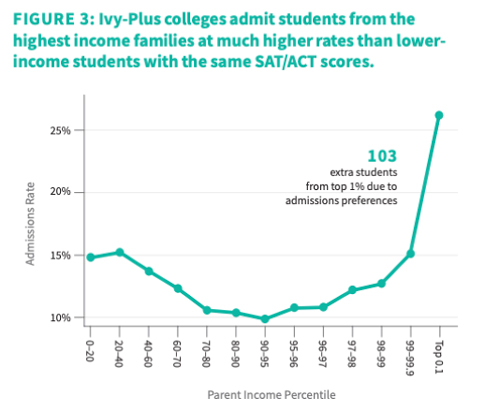I spent many years around and inside New York City. It was the beating heart of not just the state, region, or country, but the entire global financial system. New York City is home to 8 million people but its wider tri-state urban sprawl totals 20 million. New York City was a monolith. That’s why when you said “the city” you didn’t have to specify which one. People knew. If you aspired for more, you went to the city.
The promise of advancement in your career was enough to put up with many material and cultural toxins. Yet in a combination of those toxins increasing, the economic opportunity decreasing, and new rival cities burgeoning, the city’s promise faded. An August 2020 New York Post op-ed declared “New York City is dead forever.” The National Association of Realtors reported that the state of New York had the second-highest outward migration total—32 times the median state’s outward migration.
New York City is not alone in this trend. California had the highest outward migration. Illinois, New Jersey, and Massachusetts closely followed. These states, outside the tri-state area, are synonymous with their cities of Los Angeles, San Francisco, Chicago, and Boston. Americans are fleeing these urban hubs because of out-of-control crime, rapidly increasing cost of living, and overwhelming anti-common sense culture.
They are also fleeing because socio-economic mobility has stalled. For example, a recent study by Opportunity Insights found that, after comparing a sample of students scoring equally on the SAT/ACT tests, those in the 40th-90th percentile had the lowest admissions rate to Ivy-Plus universities. This means the middle and upper middle classes of America are being discriminately shut out of upward mobility. This example is emblematic of the general trend across these cities that no longer offer advancement for the regular people of America.

New states and cities have offered an alternative to this decay. Among the top ten highest inward migration states were Florida, Texas, South Carolina, Tennessee, and Arizona. The common threads between these states are that they are more geographically southern, more culturally common sense, and despite being once peripheral economically, now offer ever-growing economic potential.
I’ve found myself in Phoenix, Arizona as one individual part of the Great Middle Class Migration from decaying states to thriving states over the past few years. At first, I thought I was at the edge of civilization—and to be fair, the desert landscape isn’t helping dispel those notions. But the longer I stayed and learned of my new home, the more I saw that, in fact, this was the future of civilization.
In the past 10 years, Arizona has, on average, grown its GDP 13% faster than New York. In the past 5 years, Arizona has grown 31% faster than New York. If you look around, you can see this macro-trend everywhere. Phoenix is home to a branch of the Mayo Clinic system which is rated as one if not the best hospital system in the world. Arizona receives 29% of its energy from the Palo Verde Generating Station nuclear power plant, which is the largest nuclear power plant in America. Arizona has long been home to major semiconductor chip companies such as Intel, Raytheon, Microchip, Honeywell, ASM, and others. Recently, Intel rolled out a $20 billion expansion, and Taiwanese Semiconductor Manufacturing Co. (TSMC) recently commenced construction on its $12 billion factory in Arizona.
Taken together, these facts and figures highlight the sophistication of Arizona and the clustering of prosperity in the Phoenix metro area. The compounding of Arizona’s semiconductor sector and the introduction of world-leading TSMC is even more illustrative of the high-tech future that Arizona offers. Semiconductor chips are one of the most geopolitically critical manufactured products in the world, as they are the backbone of our digital infrastructure. Arizona is the number one state in America for semiconductor chip manufacturing activity, and with new investment piling into the state, it will only continue to grow. It is often forgotten that Silicon Valley’s economic dominance was first built on semiconductor chip manufacturing. Silicon Valley’s past is a prophetic vision of Arizona’s future.
In 50 years, Phoenix, Arizona could be the most technologically advanced and futuristic city in the world. This economic power would translate into cultural and political power. The waning of the cities and states of an older America could give way to the ascendancy of states like Arizona. What would happen if Arizonans dictated the course of events in America? What would happen to our political system if Arizona values trumped New York values?
This restart of history also could rewrite the map. The biggest conflict Arizona will face will be water resource management and control of supply chains. With competition for the Colorado River and underground aquifers, Arizona might seek aggressive action outside its borders to secure the river from competing states. Additionally, access to the oceans through the annexation of San Diego, California, or Mexico’s Gulf of California would secure water desalination processing as well as port control for the exports and imports of its semiconductor chips.
These are speculations, but they are grounded in today’s facts. The Old West values that made Arizona have enabled it to modernize in the true sense of the word. Arizonans don’t seek performative modernization, but real technological acceleration into a new age. The modernization was thanks to the common sense culture that attracted businesses and people into the state. Picture glistening glass skyscrapers with skyways, flying cars, portable nuclear energy reactors, spaceflight launchpads, and robots walking side by side with people. In the heart of the desert and beneath the scorching sun, Arizona ignites a fire of possibilities, casting a luminous vision of a state that surges ahead as a vanguard into the future.
Peter Ryan is a 2023 Museion Fellow at Beck & Stone and CEO & Founder of Ryan Research.